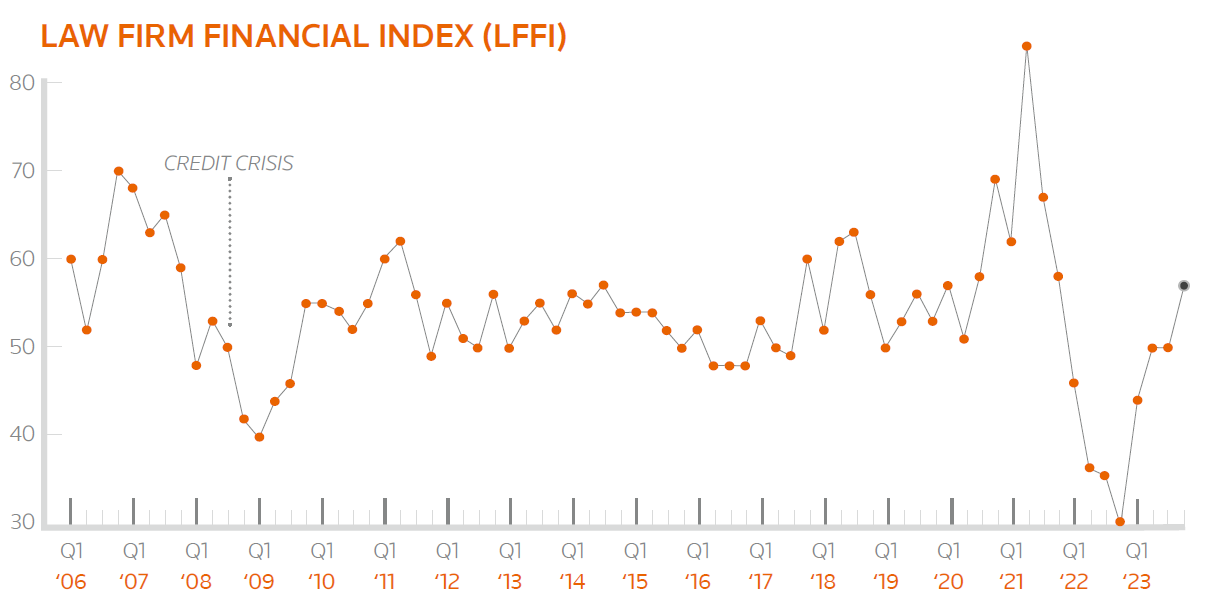Law firms rebounded into profitability in 2023 and seem to be on firmer ground going into 2024, according to the Q4 2023 Law Firm Financial Index report
What a difference a year makes. The latest Thomson Reuters Institute Law Firm Financial Index (LFFI) report shows how the largest law firms have battled back from the Index’s all-time low score in Q4 2022 and now sit above the Index’s historical average. The report also shows how current market conditions are impacting the different strategies employed by different law firm segments, with widening gaps and surprising turnarounds from those segments that had struggled in prior quarters.
Key takeaways in Q4
-
-
-
- Law firms saw across-the-board improvements in Q4 2023, with large firms benefiting from counter-cyclical demand despite stagnant transactional demand.
- A strategic approach to expense management, including slowing the pace of total expense growth, is noted, particularly among Am Law 100 firms.
- Technology’s role is growing, suggesting a shift away from traditional billable hours towards value-based client services.
-
-
The last quarter of 2023 saw law firms experience positive movement across all fronts — from legal demand and billing rates to productivity and expenses. This holistic improvement suggests a robust response to the challenges and opportunities presented by the current economic landscape. Particularly, large law firms continue to benefit from counter-cyclical demand, indicating a resilience that, while not eclipsing the highs of 2021, has managed to steady firms despite stagnant transactional demand.
A notable theme of this past quarter is the nuanced approach to expense management. Law firms have continued to see growth in total expenses, influenced by factors such as headcount growth and inflation. However, the pace of this increase has slowed, thanks to strategic controls over significant expense factors like year-end bonuses and overhead prepayments. This reasoned handling of expenses extends across all segments, with Am Law 100 firms in particular focusing on tightening their expense profiles with limited growth while other segments focus on achieving economies of scale through expansion.

The segmentation within the industry reveals further diverse paths to success. Firms ranked in the 51-100 range of the Am Law 100 have outshone their top 50 counterparts in demand, marking a significant shift in performance dynamics. Midsize firms, despite their demand growth leadership, continue to face challenges in translating this higher demand into equivalent revenue, a struggle less pronounced among larger firms.
Moreover, the intersection of technology and legal practice is reshaping the landscape. Advances in technology and the advent of generative artificial intelligence are beginning to decouple the traditional relationship between billable hours and revenue, suggesting a future in which the value delivered by lawyers transcends the hours worked.
The positive trends observed in the Q4 2023 LFFI report suggest a legal industry on the cusp of significant transformation, poised to embrace the opportunities and challenges of the future.
For detailed figures and graphics, fill out the form below to receive a full copy of the Thomson Reuters Institute’s Q4 2023 LFFI Report:







